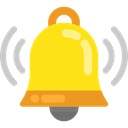Lockheed-driver
Freshman Member
Offline
Hello All. I’m looking for some advice regarding head studs…
I recently took the head off my engine to get new valve guides and valves installed. The head and block haven’t been separated for at least 40 years and because the old head studs were a swine to get out I decided to buy a new set of 10.
I was torquing up the head bolts in the correct order and in increments of 25 ft/lbs with a plan to reach 100ft/lbs as per the workshop manual. I didn’t get that far. All ten had achieved 50ft/lbs and I started torquing up no1 stud .. when it sheared. I estimate it failed around 60 ish ft/lbs. A guess… more than 50 and not 75.
Head removed. Broken stud removed after some gentle persuasion… phew!! All other studs removed.
The stud looks like it failed where the thread channel stops. Anyway … spoken to Uk supplier and I’m returning all studs as I now have now faith in this particular batch.
Having spoken to a local engine builder .. he said the older studs were probably of better quality of metal and why not use again.
What are your thoughts wise ones? Use the old? Are there any uk suppliers who sell studs of updated metal?
Anyone else had a silimar situation?
All advice gratefully received.
I recently took the head off my engine to get new valve guides and valves installed. The head and block haven’t been separated for at least 40 years and because the old head studs were a swine to get out I decided to buy a new set of 10.
I was torquing up the head bolts in the correct order and in increments of 25 ft/lbs with a plan to reach 100ft/lbs as per the workshop manual. I didn’t get that far. All ten had achieved 50ft/lbs and I started torquing up no1 stud .. when it sheared. I estimate it failed around 60 ish ft/lbs. A guess… more than 50 and not 75.
Head removed. Broken stud removed after some gentle persuasion… phew!! All other studs removed.
The stud looks like it failed where the thread channel stops. Anyway … spoken to Uk supplier and I’m returning all studs as I now have now faith in this particular batch.
Having spoken to a local engine builder .. he said the older studs were probably of better quality of metal and why not use again.
What are your thoughts wise ones? Use the old? Are there any uk suppliers who sell studs of updated metal?
Anyone else had a silimar situation?
All advice gratefully received.

 Hi Guest!
Hi Guest!

 smilie in place of the real @
smilie in place of the real @
 Pretty Please - add it to our Events forum(s) and add to the calendar! >>
Pretty Please - add it to our Events forum(s) and add to the calendar! >> 

